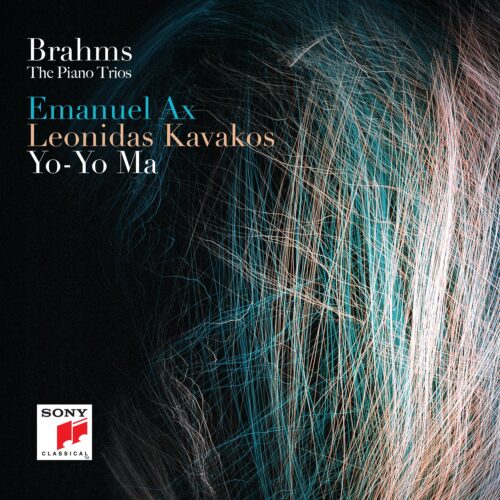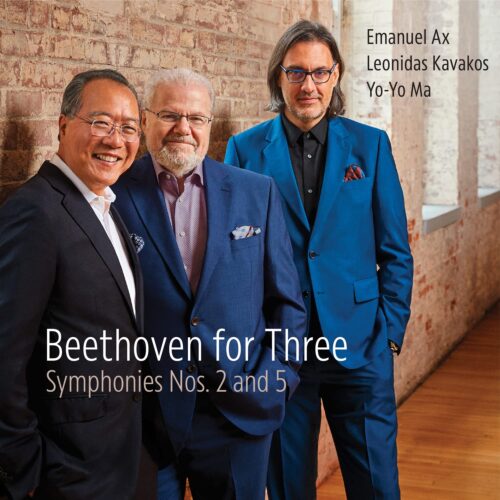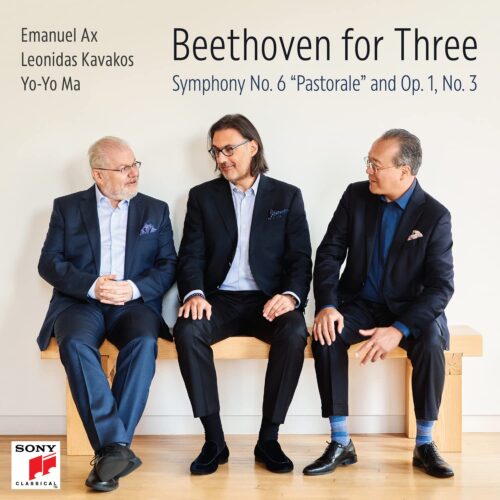A QUEST FOR MUSIC AND HUMANITY
On a delightful Saturday afternoon, January 28th, Los Angeles was graced by three masters at Walt Disney Concert Hall. Billed simply as Ax • Kavakos • Ma, the eponymous concert title did little to convey the content of the concert because, let’s face it, whatever these three will be performing, it will be epic. Synonymous with greatness, pianist Emmanuel Ax, violinist Leonidas Kavakos, and cellist Yo-Yo Ma presented a concert of Ludwig Van Beethoven’s music reimagined for three musicians.
It rankles me when someone says “You had to be there,” yet anything I write will barely scratch the surface of this experience. Listening is one thing, but watching phenomenal music being created live is quite another. The three disparate styles — Ax’s easy-going, humble personality, Ma’s mischievous and generous spirit, and Kavakos’ straight-laced serious presence — added up to phenomenal musicmaking.
Of course, Ma and Ax have recorded together before, but the trio first came together on the Brahms: The Piano Trio album. They followed that with the first Beethoven for Three — transcriptions of Symphonies Nos. 2 & 5. Their second Beethoven for Three album has Symphony No. 6 Pastorale and Op. 1, No. 3. This concert, courtesy of LA Phil, contained the yet-to-be released Symphony, No. 4 in B-flat major, Op. 60 and the Piano Trio in B-flat, Op. 97 (Archduke).
While both works grace concert halls around the world, a trio arrangement of the symphony is quite a novelty. Mr. Ax explained from the stage that during Beethoven’s time, only a few people would have had the socio-economic status to get to listen to his symphonies. (Taylor Swift tickets, anyone?) Historically, this means that music lovers experienced Beethoven’s work in chamber music or at salons.
Ax’s former pupil and friend, Shai Wosner, took on the monstrous task of arranging these well-beloved symphony for a piano trio. The result is a work of incredible musicality. The idiomatic arrangement makes you wonder if Beethoven himself had written for a trio. What struck me the most about pairing down the instrumentation was how unburdened the music sounded. There is clarity to the musical phrases and ideas that occur more than in a symphony. My guess is that with more instruments of various sonority and timbral qualities, the sound hovers and rings longer in a hall.
Additionally, with many musicians needing to play in concert, a consensus and moderation of tempi and expression must be made to achieve a sonorous unison. With only a piano, violin, and cello, the musical phrases can almost run away from the musicians. Imagine three special force members conducting a military operation designed for hundreds of personnel.
The Adagio – Allegro vivace of the Fourth Symphony now positively swirls around you. The gentleness of each violin and cello phrase beckon us closer to the music. The first movement ends with a festive and celebratory theme with a pastoral-like tone of poetry. In Adagio, a choral-like melody flows between the cello and violin. A certain operatic dramatic change of the sonic world breaks up the waltz in the middle section giving Kavakos a particular moment to shine. In Allegro Vivace, we hear the triumphant return of the festive theme. Ma is practically dancing with his cello, interacting with Ax, searching and savoring each unison line with his partners. The strings dug deeply to play the celebratory fast lines in Allegro ma non troppo. Their performance chops are evident in how they navigate through the contracting characteristics of the furiously happy call theme against the dainty and light answer material. To capture the brightness of trumpet and timpani accents, the trio performed with excellent dynamic range to capture the contrasting nature of the symphony.
After intermission, the trio returned to the stage, but Kavakos and Ma switched their instruments. Ax, almost embarrassed, explained that since he had his piano switched during the interval, Ma had decided to arrive on stage with Kavakos’ violin. This, of course, draws a good laugh, reinforcing their desire for music not to be museum pieces but truly alive, allowing the audience to go beyond mere appreciation of the music and into emotional connections with beauty, humor, joy, and sadness.
For the Archduke, Allegro moderato opens with the lush theme from the piano, answered with a thoughtful, slower response from the violin. Then the piano continues the journey in the first movement, seemingly searching for a home while passing through secondary thematic materials with the gentle buttress of the cello and violin. Ax’s dexterity on the piano is highlighted here. Scherzo, Allegro begins with a contrapuntal thematic introduction with the cello and violin. Ma’s brilliant pizzicato rang through the hall to support Ax’s playing when the piano took over the thematic development. The Andante cantabile ma peró con moto is like witnessing a flower slowly unfolding its petals. The pious theme from the piano is played with great reverence and answered with sweet legatos from the strings. The Allegro moderato closes the piano trio with a play on the rhythmic pulse. The trio all shared a smile on stage during this challenging but witty movement.
It must be hard not to brag and name-drop when you are a child prodigy with a decades-long career, yet Yo-Yo Ma — introducing the encore — recounted his email to the one and only John Williams (described by Ma as the Beethoven of our time), inquiring after a piano trio version of the Theme from Schindler’s List for their tour. Maestro Williams happily obliged, and the trio performed a tear-jerking performance. When the last note rang through the hall, not a sound could be heard after such a spellbinding and gut-wrenching interpretation.
A sense of loss and celebration persisted throughout the concert. Paraphrasing Ma, he described how the interest in symphonic reduction came from their shared devastation at the loss of opportunities to play during the pandemic — the trio’s two recordings occurred during COVID. Ma also took the time to acknowledge the Lunar New Year and wished everyone well to those who celebrate it. He also added the necessity of making “life-affirming music” because we all need more ways to celebrate life in the wake of recent tragedies.
If you’ve wondered what separates a master from the rest of the crowd, aside from extraordinary skill and circumstance, the answer lies in the vulnerability that artists are willing to display on stage. Obviously Ax, Kavakos, and Ma played extraordinarily well, but they also presented their music with annotations and funny anecdotes and love. I am sorry to those of you who missed the concert.
You had to be there.




